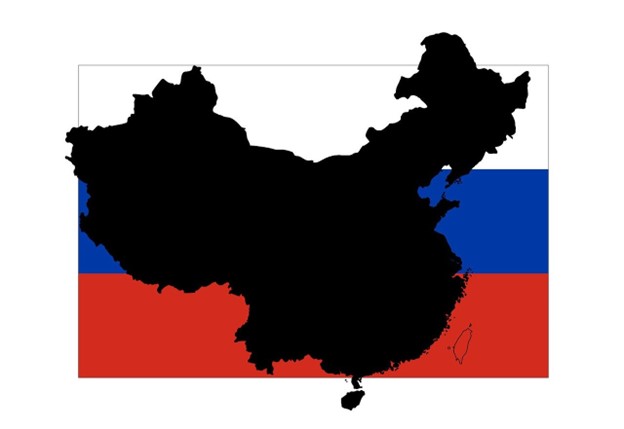China and Russia expanded their security cooperation framework last year to include two joint maritime drills near Alaska and in the Arctic.
For the first time, aerial patrols integrated the nuclear-capable H-6N strategic bomber. Military analysts in Washington suggest Beijing’s intent is to project nuclear deterrence and intensify its challenge to Western strategic dominance wherever it can do so.
People’s Daily Online reported recently that China conducted a total of nine “Joint Strategic Air Patrols,” including the two held in 2024. “A month-long joint patrol between the China Coast Guard and its Russian counterpart in the Arctic shows the expansive scope of Beijing’s defined maritime rights and interests and indicates its growing presence in the Arctic,” according to Yu-cheng Chen writing in the Jamestown Foundation’s China Brief.
Since last fall, in the Arctic region, the two states have coordinated two maritime exercises and conducted joint maritime law enforcement activities in the Arctic Sea. Taiwan is not standing by idly while the two communist states increase the threat level to its and other nations’ air and oceanic security.
Taipei is building its own hypersonic missiles with a range extending past Beijing to secure its deep strike capabilities inside China. Intelligence sources point out that the Czech Republic is in talks to provide the mobile missile vehicles to launch the missiles. Taiwan’s National Chung-Shan Institute of Science and Technology is mass-producing a supersonic cruise missile with a projected range of 1,200-2,000km. It is also working on an extended range version of its Ching Tien hypersonic missile. Last week military sources told Liberty Times newspaper that the medium-range Ching Tien supersonic cruise missile is currently deployed in bunker-style launch positions with the longer-range Ching Tien hypersonic cruise missiles to be deployed using mobile launch vehicles from the Czech Republic.
Expanded Sino-Russian cooperation, along with the alliance’s increasingly aggressive behavior, indicates that China is willing to use Russia to secure its political-military goals in and outside of Asia. “Since 2019… PLA and Russian military aircraft enter the Republic of Korea’s air defense identification zone once or twice under the guise of military exercises or strategic patrols. They have never provided prior notification of their operations,” says Yu-cheng Chen.
The Japanese Ministry of Defense’s Joint Staff report that two of the PLA’s H-6 bombers and two J-16 fighter jets flew from the East China Sea to the Sea of Japan on November 29 while two H-6 bombers and two Russian Tu-95 bombers simultaneously conducted long-range flights from the Sea of Japan to the East China Sea. There were a total of 10 Chinese and Russian aircraft operating near Japan.
Last month the PRC Ministry of National Defense released a brief statement saying that its exercises were conducted “in accordance with the annual cooperation plan between the Chinese and Russian armed forces (根据中俄两军年度合作计划). The coordination effort is significant in that it demonstrates recent advances in development in the PLA’s military technology and capabilities. Sanctions by Western nations have at least temporarily pushed China and Russia to work more closely together. The exercises, according to Chinese newspapers, strengthen their mutual trust between the militaries and forms part of broader preparation for comprehensively addressing regional and global security challenges.
This alignment is of growing concern in Washington and other Western capitals. Sino-Russian cooperation is based, in part, on presenting a united front to counterbalance Western powers. Since last summer that cooperation has expanded into maritime law enforcement operations aimed at improving military interoperability in the Bering Sea, the Sea of Japan, and other areas.
NATO is also growing concerned that the Sino-Russian activities pose a potential threat to Europe itself. China Coast Guard vessels traveled a total of 17,000 nautical miles up to the Arctic and back to defend “maritime rights and interests (海洋维权)” under harsh environmental conditions, testing their resilience to conduct protracted missions. “Taken together, these activities also demonstrate the strategic resolve of both countries to counterbalance perceived encirclement by Western allies in the region,” according to Yu-cheng Chen. Such an escalation in collaborative military framework suggests that China, working together with Russia, poses a tangible security threat not only regionally but globally in the coming years.
Daria Novak served in the U.S. State Department
